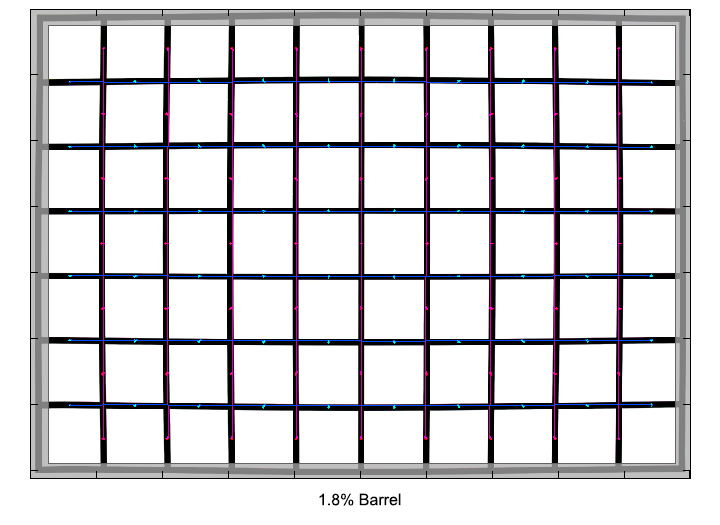|
Zeiss Distagon T* 25mm f/2 ZF.2 (FX) - Review / Test Report - Analysis |
|
Lens Reviews -
Nikon / Nikkor (full format)
|
|
Page 2 of 3

Distortion
The Zeiss Distagon T* 25mm f/2 produces a moderate degree (~1.8%) of barrel distortion. This is about average for a prime lens in this class and also almost identical to the older Distagon T* 25mm f/2.8.

The chart above has a real-world size of about 120x80cm.
Vignetting
The vignetting characteristic seems to be a real weakness of Zeiss Z-series lenses when used on full format DSLRs. The Distagon shows a fairly extreme deterioration of more than 2EV at f/2 - this will be very visible in most scenes. The problem is still quite pronounced at f/2.8 (@ ~1.5EV) but it's not overly significant anymore from f/5.6 onwards.
We're performing our vignetting analysis based on
(uncorrected) JPEGs straight from the camera. The JPG engine of the Nikon D3x features a rather flat
gradation curve, thus has a moderate contrast characteristic, resulting in comparatively low vignetting figures - the
corresponding Canon figures are roughly 40% higher due to the more
aggressive default contrast setting.

MTF (resolution)
The Zeiss lens produced very high resolution figures in the MTF lab. The center quality is nothing short of stunning with extremely high resolution combined with snappy contrast straight from f/2.
The border quality is a bit weaker with very good results and the corners are softer still. Stopping down to f/2.8 has no major effect but there's a more substantial boost at f/4. The peak performance is reached around f/5.6 with a very sharp image quality across the image frame. The quality level is kept at f/8 whereas diffraction reduces the potential from f/11 onward.
Please note that the MTF results are not directly comparable across the different systems!
Below is a simplified summary of the formal findings. The chart shows line widths
per picture height (LW/PH) which can be taken as a measure for sharpness.
If you want to know more about the MTF50 figures you may check out the corresponding
Imatest Explanations

Chromatic Aberrations (CAs)
Zeiss claims to have substantially reduced lateral CAs (color shadows at harsh contrast transitions) on this lens and they are indeed on a fairly low level of around 0.5px on the average at the image borders. This is hardly field-relevant.

|